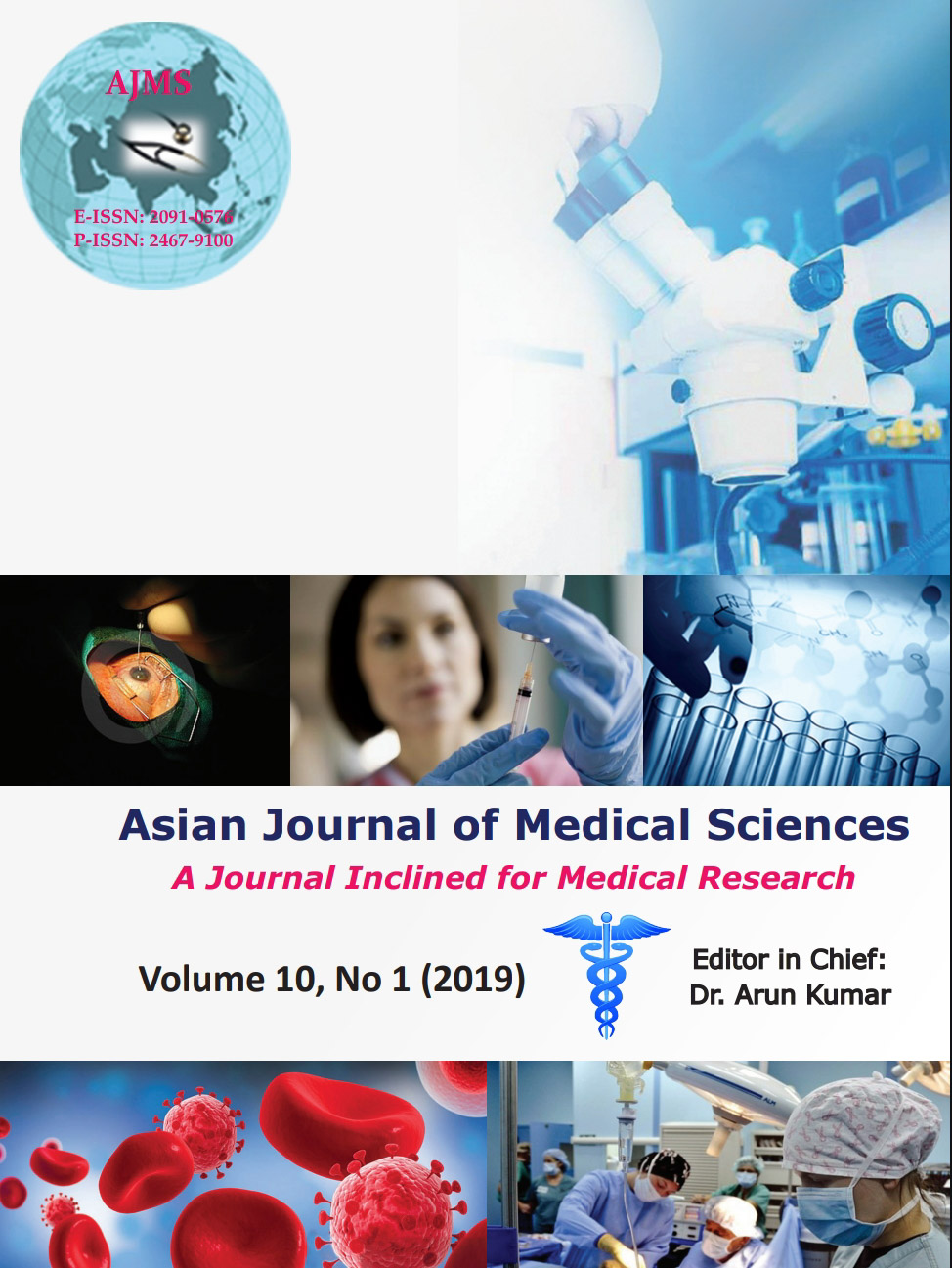Clinicoradiological profile of interstitial lung disease in rheumatoid arthritis
Keywords:
High-resolution computed tomography, Interstitial lung disease, Rheumatoid arthritisAbstract
Background: The burden of interstitial lung disease (ILD) in rheumatoid arthritis (RA) patients in resource limited countries like India is often under-reported. This study was conducted to find out the clinicoradiological profile of ILD in patients with RA in India.
Aims and Objectives: (1)To find out the frequency of Interstitial Lung Disease (ILD) in Rheumatoid Arthritis (RA) (2) To correlate the clinical findings with those of radiological(Chest x-ray & HRCT Thorax) and pulmonary function tests including Spirometry, TLCO (Diffusing capacity of the Lung for Carbon monoxide/DLCO Corrected for alveolar volume i.e., DLCO/V) Estimation.
Materials and Methods: Thirty consecutive patients of RA (with or without pulmonary symptoms or signs) who fulfill the American Classification of Rheumatology criteria1987 were selected from the patients attending the General Medicine OPD (Rheumatology Division) of B.R. Singh Hospital during the study period regardless of being on any medications for RA. This was a cross-sectional, descriptive study. Results were tabulated in Microsoft office excel worksheet and descriptive statistics were expressed as means, standard deviations (SD) mean for continuous normally distributed data and as percentages. Statistical software SPSS version 19.0 was used for data analysis. Unpaired t test (for continuous data)/Chi square test (for proportion) was used for comparing cases and controls.
Results: The frequency of ILD in RA was 60%. Female patients with a positive rheumatoid factor had a greater chance of development of ILD.The frequency was found to be increased after the age of 40 years. Though in this study 60% of patients had restrictive pattern, 31% had obstructive and 3 % had mixed pattern on Spirometry. The patients with deforming RA had greater frequency of restrictive or mixed pattern on Spirometry. 22.22% patients had a decreased TLCO despite having normal CXR. Despite being asymptomatic
12 patients had restrictive lung disease and reduced TLCO with HRCT evidence of ILD. Overall, Spirometry & TLCO are the most appropriate tests to detect restrictive lung disease in patients with RA. In fact, HRCT can show evidence of ILD even when clinical parameters and Chest X-ray are normal.On HRCT of thorax reticular pattern and sub-pleural fibrosis (UIP-Usual interstitial pneumonia) are the predominant pattern.
Conclusion: The frequency of ILD in RA is quite high. It may be recommended to use Spirometry & TLCO as screening test for detection of restrictive lung disease in patients with RA who should undergo HRCT of chest to confirm presence of ILD in a resource limited setting.
Downloads
Downloads
Published
How to Cite
Issue
Section
License
Authors who publish with this journal agree to the following terms:
- The journal holds copyright and publishes the work under a Creative Commons CC-BY-NC license that permits use, distribution and reprduction in any medium, provided the original work is properly cited and is not used for commercial purposes. The journal should be recognised as the original publisher of this work.
- Authors are able to enter into separate, additional contractual arrangements for the non-exclusive distribution of the journal's published version of the work (e.g., post it to an institutional repository or publish it in a book), with an acknowledgement of its initial publication in this journal.
- Authors are permitted and encouraged to post their work online (e.g., in institutional repositories or on their website) prior to and during the submission process, as it can lead to productive exchanges, as well as earlier and greater citation of published work (See The Effect of Open Access).




